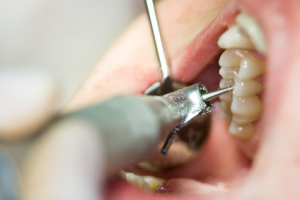In the dental field there are many types of dentists, they can range from extremely conservative to extremely aggressive. And depending on where your dentist falls in that range you may find that accompanying your routine dental exam your dentist will say, ‘ok lets watch that spot’, or ‘its a small cavity but I recommend filling it before it becomes something bigger’. So what exactly does that mean?
 Teeth have different layers to them, the outer enamel layer, the softer inner dentin layer and the innermost layer where the nerve and blood supply to the tooth resides, the pulp chamber. When diagnosing a cavity we look at what damage has been done to these layers and from there decided what procedure needs to be done. A microcavity or incipient decay, is a cavity that is in the enamel layer but has not passed into the dentin layer. The question is, what are the risks of filling it vs. not filling it?
Recent studies have shown that filling microcavities may not help in preventing further decay or breakdown of the tooth. However, treating cavities at this stage has not shown any increase of decay or damage to the tooth either. It is our belief that when a microcavity is noted while we may not recommend placing a filling immediately, we do recommend treating the area by other means. Small cavities such as microcavities often times can be abated or avoided by maintaining a good home care regimen. This includes keeping the area clean as well creating a healthy oral environment to help stop the cavity from progressing. This can be done by stabilizing the pH in the mouth as well as using fluoride to help strengthen the enamel. To learn more about how to maintain great oral health follow this link.
The way it stands there are many viewpoints on how aggressive to be with decay. You as a patient may not want any decay in your mouth no matter how small. Or vice versa you may not want to begin removing tooth structure for something that may be maintained for a number or years. The best option for every patient is to find a dentist that feels the same way you do, whether it be conservative or aggressive.
Teeth have different layers to them, the outer enamel layer, the softer inner dentin layer and the innermost layer where the nerve and blood supply to the tooth resides, the pulp chamber. When diagnosing a cavity we look at what damage has been done to these layers and from there decided what procedure needs to be done. A microcavity or incipient decay, is a cavity that is in the enamel layer but has not passed into the dentin layer. The question is, what are the risks of filling it vs. not filling it?
Recent studies have shown that filling microcavities may not help in preventing further decay or breakdown of the tooth. However, treating cavities at this stage has not shown any increase of decay or damage to the tooth either. It is our belief that when a microcavity is noted while we may not recommend placing a filling immediately, we do recommend treating the area by other means. Small cavities such as microcavities often times can be abated or avoided by maintaining a good home care regimen. This includes keeping the area clean as well creating a healthy oral environment to help stop the cavity from progressing. This can be done by stabilizing the pH in the mouth as well as using fluoride to help strengthen the enamel. To learn more about how to maintain great oral health follow this link.
The way it stands there are many viewpoints on how aggressive to be with decay. You as a patient may not want any decay in your mouth no matter how small. Or vice versa you may not want to begin removing tooth structure for something that may be maintained for a number or years. The best option for every patient is to find a dentist that feels the same way you do, whether it be conservative or aggressive.
Frangella Dental
Offering advanced techniques in Cosmetic and General Dentistry in New York City.
200 W. 57th Street, Suite 1405
New York, NY 10019
(212) 245-2888
care@drfrangella.com

Leave a Reply
Want to join the discussion?Feel free to contribute!